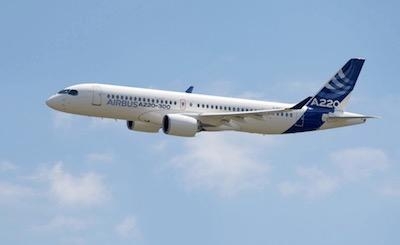Sun, Dec 19, 2021
AD 2021-16-19 Prompted By Reports Of In-Flight Engine Shutdowns
The FAA is adopting a new airworthiness directive (AD) for certain Airbus Canada Limited Partnership Model BD-500-1A10 and BD-500-1A11 airplanes.

This AD was prompted by reports of in-flight engine shutdowns (IFESs); investigation results indicated that this could be caused by high altitude climbs at higher thrust settings on engines with certain thrust ratings. This AD requires amending the existing airplane flight manual (AFM) to incorporate a new limitation and revise certain normal procedures, as specified in a Transport Canada Civil Aviation (TCCA) AD, which is incorporated by reference. The FAA is issuing this AD to address the unsafe condition on these products. This AD is effective January 21, 2022.
Supplementary Information: TCCA, which is the aviation authority for Canada, has issued TCCA AD CF-2020-41, issued October 15, 2020 (TCCA AD CF-2020-41) (also referred to as the Mandatory Continuing Airworthiness Information, or the MCAI), to correct an unsafe condition for certain Airbus Canada Limited Partnership Model BD-500-1A10 and BD-500-1A11 airplanes.
The FAA issued a notice of proposed rulemaking (NPRM) to amend 14 CFR part 39 by adding an AD that would apply to certain Airbus Canada Limited Partnership Model BD-500-1A10 and BD500-1A11 airplanes. The NPRM published in the Federal Register on April 16, 2021 (86 FR 20097).
The NPRM was prompted by reports of IFESs; investigations are ongoing to determine the root cause. Investigation results indicated that an IFES could be caused by high altitude climbs at higher thrust settings on engines with certain thrust ratings. The NPRM proposed to require amending the existing AFM to incorporate a new limitation and revise certain normal procedures, as specified in TCCA AD CF-2020-41.
The FAA is issuing this AD to provide the flightcrew with information and procedures for operation above 29,000 feet to prevent uncontained failure of an engine during an IFES, which could result in structural damage and reduced structural integrity of the airplane. See the MCAI for additional background information.
More News
From 2023 (YouTube Edition): "Ain’t Your Daddy’s Super Cub”—Don Wade Co-owned by Don and Ron Wade—the former of Don’s Dream Machines, a storied >[...]
Pilot-Rated Passenger Reported That The Pilot Did Not Adequately “Round Out” The Landing Flare And The Airplane Bounced And Yawed To The Right Analysis: The pilot state>[...]
Dead Reckoning Dead reckoning, as applied to flying, is the navigation of an airplane solely by means of computations based on airspeed, course, heading, wind direction, and speed,>[...]
Aero Linx: Lake Amphibian Club This website is created and sponsored by the Lake Amphibian Club, to help spread the word about these wonderful, versatile amphibians that can land j>[...]
“I am deeply honored to be sworn in as NASA administrator. NASA’s mission is as imperative and urgent as ever — to push the boundaries of human exploration, ignit>[...]
 Classic Aero-TV: In Praise of Alabamas Patriot Aircraft USA
Classic Aero-TV: In Praise of Alabamas Patriot Aircraft USA NTSB Final Report: Cirrus Design Corp SR22
NTSB Final Report: Cirrus Design Corp SR22 ANN's Daily Aero-Term (12.21.25): Dead Reckoning
ANN's Daily Aero-Term (12.21.25): Dead Reckoning ANN's Daily Aero-Linx (12.21.25)
ANN's Daily Aero-Linx (12.21.25) Aero-News: Quote of the Day (12.21.25)
Aero-News: Quote of the Day (12.21.25)



